
|
| Accept Cookies | Customize | Refuse Cookies |
Marco Santagostino www.juzaphoto.com/p/MarcoSantagostino  |
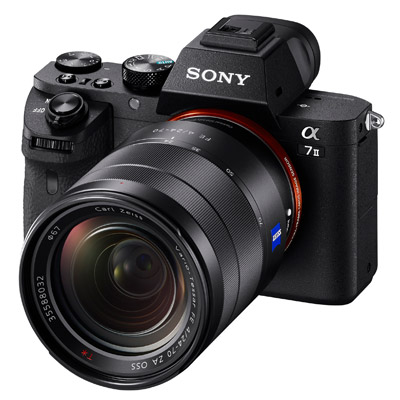 | Sony A7 II Pros: Lightness, price, possibility of using vintage manual lenses from other manufacturers sold at economic price Cons: Outdated Technology, limited battery life compared to reflex also entry level, questionable ergonomics Opinion: I bought this car, used, in October at a good price. I decided to proceed with the purchase because it was a full frame that I could buy at an affordable price and attracted me the possibility of using vintage FF manual optics at a price accessible through cheap adapters. My other machines are APS-C (a Sony A100 and a remarkable Sony A68). We See the different aspects of the machine, compared to the Sony A68, which I was very satisfied and will use as a reference. Ergonomics: Poor, the grip is small and the little finger tends to escape, the use with a tiny skin-like case that makes it a little more full bodied. The position of the keys disorients a little and are not often positioned comfortably, especially the one dedicated to recording movies. In This aspect the A68 is a whole other thing, the A7II scales the low ergonomics with a lower weight, less space and more portability. Construction: Magnesium body, I find it solid and the sensation is totally different from the A68 which is only built in plastic (questionable choice). Menu: Same software, then same menu a bit chaotic. Often There are really incomprehensible abbreviations and I often had to use the online instructions to understand what it was. Rear Screen: I think is acceptable compared to newer machines, excellent compared to A68 (which has a weak point here). EVF: Better than the A68, I don't think it compares to the newer machines. Bright, well readable. If you press in half the shutter button as you were hooking up a subject the refresh rate increases making it more usable in some situations. Autofocus: Good, as opposed to SLRs the AF points occupy most of the sensor surface. It is a little less precise and performing than that of a reflex but it is still good. I Have only one AF lens at the moment (Samyang AF 35mm f2.8) and the AF goes a bit in crisis with low-brightness scenes or when you ask to focus on subjects positioned towards the sides of the image, I don't know what happens with different lenses. With This lens I detected problems even with the AF-C that goes jerky and is not very fluid if it imposed relatively low exposure times, with faster times (1/100 on) The AF is definitely smoother. File Quality: Compared to APS-C The jump is large and perceptible, although it must be said that now the quality of the APS-C sensors is high and are able to produce images of excellent quality. The file is always very malleable and the shadows are recovered well. Good dynamic Range, in general I can get high light exposed correctly and recoverable shadows. The pasta of the image and the colors I like. It Is often read that the colors of the Sony files are questionable or ugly, but shooting in raw and post production can solve any problems, so I find that they are nonsense criticism. Lenses: Expensive ones Sony. More accessible than those of third parties. Give away those vintage manuals, which then is the reason I bought it. I'M using the machine with a Samyang 35mm AF f2.8 (which is compact and surprised me as image quality), an Oly OM 50mm F 1.8 (Nice!), Oly 135m f2.8 and a Zenith Helios 44-2 58mm F2 (Amazing and fun). The use of manual lenses is facilitated by focus peaking and zooming on the image. Battery: The philosophy is different from that reflex, if you do not shoot it goes off, otherwise you eat all the charge. I bought two spare batteries and an external charger. On balance, if you want to move to the FF world, you do not want to spend high sums and above all do not need high performance (this is the crucial point), I think this machine should be taken into account. For the use I do and for my needs by hobbyist is so much stuff, a professional will probably want more. sent on April 07, 2019 |
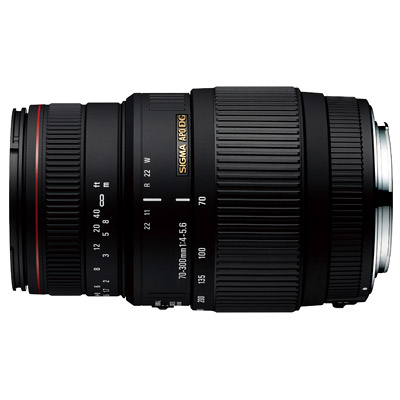 | Sigma AF 70-300mm f/4-5.6 DG APO Macro Pros: Price, weight content. Macro?!? Cons: Loses a bit in sharpness when used with maximum focal length. Opinion: Purchased a few years ago as the first tele-zoom "true". Currently it is at very attractive price. Constructively well done, even though it is almost all made of plastic material. The plastic however allows to contain the weight. The attack is metal. In general the yield is good, it is at the chromatic level that of definition, even if it suffers a little with the maximum focal. In this case the image softens slightly. At full aperture you notice some chromatic aberration. Good resistance to flare and parasitic light, I have taken backlit photos without any particular problems. Autofocus fast enough. It's also really noisy, but this is not a problem in itself for the photo. I noticed some uncertainty in critical condition. I used the lens also freehand with satisfactory results. The focus ring is very fluid, that of focal selection a little less. Originally purchased for wildlife photos, I started using it with interesting results even on the street. sent on July 03, 2018 |
 | Olympus OM-1 Pros: Compact, simple, battery-free, cheap and good quality optics, bright viewfinder. Charming Cons: In progress. It would seem no one for an analog. Opinion: I found by chance the OM1n model in the site of a well-known store of used material at a time when I wanted to get rid of the whimper of taking an analogue machine. Purchased together with a Zuiko OM 50 mm f / 1.8. The car was in very good condition, with no obvious signs of wear, only some slight scratches on the bottom probably due to the use of a tripod or grip. Some slight mark on the mirror in the point of contact with the sponge. The machine is incredibly small compared to other SLRs, but with a strong feeling of solidity. I received it a few hours ago and I could not prove it properly, but it seems to me that mechanisms work in a precise way. The ring nuts on the machine obviously have the basic functions: exposure time (positioned in correspondence with the lens coupling) and ISO setting. The luxury features are a lever to raise the mirror, a self-timer function operated by a lever with spring-loaded automatic and the exposure meter. The light meter requires the old batteries to mercurio from 1.35 V no longer on the market, in its place I will try to use an "oxygen" battery that I'm waiting for me to be delivered. The aperture of the diaphragm is controlled by a ring on the lens. The machine has a lever to activate a spot meter, the lancet is shown in the eyepiece. The lens is released using a button on the lens itself. The depth button is also located on the lens. Focusing is performed using a stigmometer. The machine has no frills and you can not cheat on pp, the machine does what you are told and if the composition sucks it is certainly not his fault. It will be a nice gym. In progress. sent on March 23, 2018 |
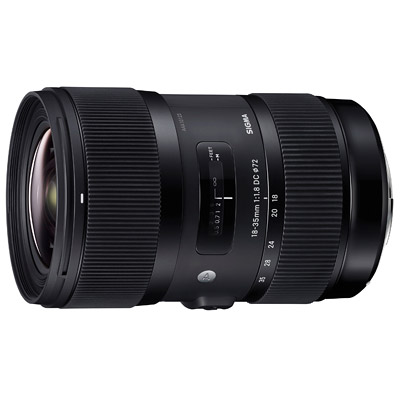 | Sigma 18-35mm f/1.8 DC HSM Art Pros: Zoom with wide-angle focal lengths that in Sony APS-C are close to normal, brightness, aperture f / 1.8 constant. Amazing sharpness! Well built. Silent autofocus. Precision rings. Full time manual focus. Cons: Weight, price. The rings are a bit '"slow", it could be limiting in some situations. Opinion: Comperato used with very strong discount, on balance it was a bargain. Solid construction, with plastic and alloy parts. The rings are wide and are easy to hold. On the upper part there is the classic window with the focus distance. No depth-of-field scale (being a zoom). The rotation of the ferrules is a little slow and offers some resistance, this may be limiting in some cases, but since there is the autofocus why not use it? The ring nuts remain in place and do not have "play", allowing good precision and maintaining the set position. The rotation is fluid and "satisfies". It does not have the hard infinity stop focus. The lens comes with a petal hood and a case. The autofocus of my sample seems to work well, for now I have not encountered problems with focusing. AF is activated by moving the switch on the lens and on the machine. The fire can still be set manually as%3B the lens has the full time manual focus. The ultrasonic motor is silent. So far I have been able to use the lens only at night for an hour and showed a surprising clarity even at full aperture. For now I feel strongly recommended to those who use APS-C cameras sent on February 21, 2018 |
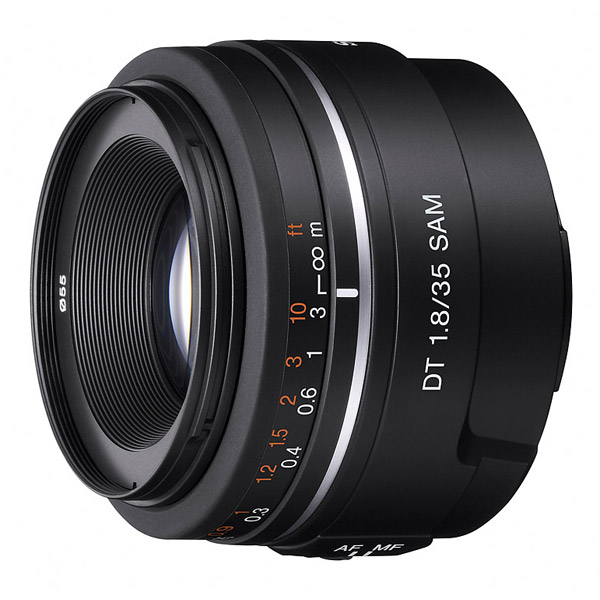 | Sony DT 35mm f/1.8 SAM Pros: Size and comfort, brightness, soft bokeh, price Cons: Construction material; purple fringing af / 1.8; a little soft at f / 1.8 Opinion: Purchased for an initial normal lens, the Sony A68's APS-C sensor has an angle of around 52 ° C. Constructively made of mixed sensations: it is built for the most part from satin-finished black plastic (including mounting ring) with some metal parts, so it looks a bit fragile, but it is light and seems well built. The focusing ring is very fluid. With the focus the lens lengthens slightly. To activate the AF you need to operate a switch on one side, on the A68 you just need to activate it to activate the AF without having to act on the switch on the body of the machine. The AF works well and precisely, thanks also to the SAM motor. The color rendering and sharpness seem very good to me. Thanks to the plastic construction it is extremely light. And then it is very bright. Update: af / 1.8 is purple fringing a gogo and is a bit 'soft.rnActually the price is quite tempting and the relationship is in favor of quality;. is a lens that could be of interest especially for those who approach the first lenses like me and are interested in a normal lens. sent on December 21, 2017 |
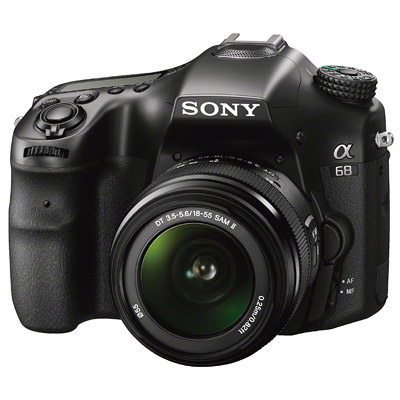 | Sony A68 Pros: Lightness, Autofocus, burst, viewfinder, price, true automatic white balance, colour rendition. Cons: Materials: Shell and attachment ring entirely in plastic, shoulder strap, instruction booklet very bad. Opinion: Hot comment because I just got here. I bought the A68 to support it to my old Sony A100 of the far 2006, thus facing a long qualitative and generational leap. Having just arrived I took only a few test photos in the home. At the technological level is definitely good. The EVF is excellent, bright, rather fluid and solves the low light problems of the optical. You have to get used to it because in some conditions, for example when "pushes" to make light a rather dark scene, the frame rate drops; Also the ignition is not immediate when approaching the eyepiece, so there is a very short initial blackout. The body is equipped with many customizable buttons and the menu has a large number of options. Initially, all this wealth is displaces and is probably the result of a process aimed at making this machine as flexible as possible and with more options available at your fingertips, but inevitably requires a certain period of apprenticemente Penalized by menu items sometimes unclear. AF extremely efficient and precise, even in low light conditions. The screen is actually smaller than other competitors, but in my case, coming from an old machine, I do not perceive the problem. Same speech for relatively low resolution. Even the touch screen I do not miss. The shutter button is very sensitive, just a slight pressure to give the command to lock the AF and to shoot. The burst of shots is very rapid and is a "lethal Weapon". Interesting the top LCD screen that shows the basic information on the set up of the machine. In my opinion there are two steps back also compared to Grandma A100:1-the body is entirely made of plastic (in the A100 was mixed), including the mounting ring, this contributes to lower costs and weight but makes it seem less solid. To be honest the ring still seems solid and to mount a Minolta 24mm AF you have to exert a fair pressure. 2-however unimportant that it is also the material of the shoulder strap is not the best, that of the A100 seems more resistant. Finally the instruction booklet is bad, it does not clearly explain the menus and functions and forces you to consult the guide on the site. In conclusion, apart from the three problems mentioned, the first impression is definitely good and, in my specific case, would have been positive anyway because it is a technological leap of 11 years compared to the machine I have used so far (and that I think I will continue to Use). The last positive point lies in the price, currently very tempting, especially if you decide to buy only the body because you already have the optics and do not feel the need for a new kit lens. I can only add that it was a good buy and has colors that I like a lot. Update: I noticed that the UV filter (Hoya) applied to the lens puts a little ' in crisis autofocus, especially in low light. Update 2: The ISO seal looks very good, I arrived to photograph up 1250 in a decommissioning mine with a Sigma at f/1.8-f/2.2 getting photographs with little noise. sent on December 07, 2017 |
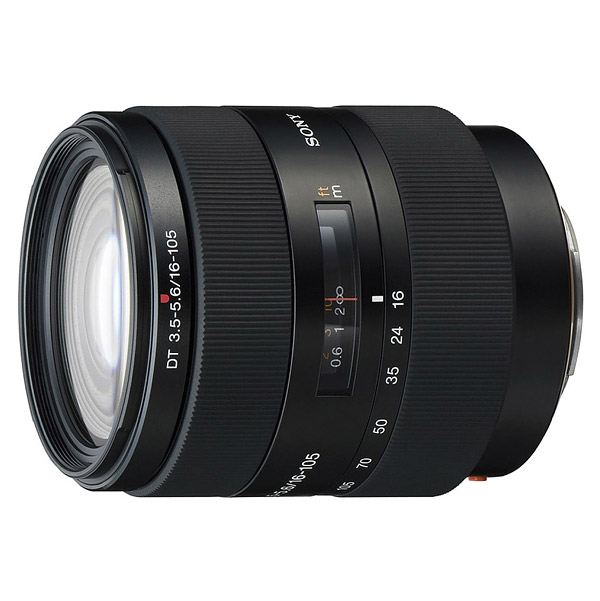 | Sony DT 16-105mm f/3.5-5.6 Pros: Extension, AF, Versatile Cons: Vignetting, focus ring somewhat inaccurate. Ring to change the focal length slightly slow. Opinion: Used in good condition as a handy lenses. The construction is very good and solid, with plastic and metal barrel. The hinges are covered with non-slip rubber but tends to stain (as with any Sony lenses of entry level or medium quality). The focal length variation ring is progressive but a little slow, so no lightning passes from 20 to 70 mm. The focus lens, at least for my exemplar, has a bit of "play," so the focus may become a bit tiring. It is much better to use the AF, which in general is accurate. It always seems pretty sharp with good color rendering. The bokeh is soft. 16mm distortion is noted. Vignetting is present at all focal lengths. The new price is a bit salty and even used in reality it remains a bit overpriced. It should be considered if you are looking for a hobbyist as the undersigned, in that case will fully satisfy the needs. Those who want to take pictures seriously, even at a professional level, may not consider it as "haulers" of more expensive and performing lenses. sent on November 29, 2017 |
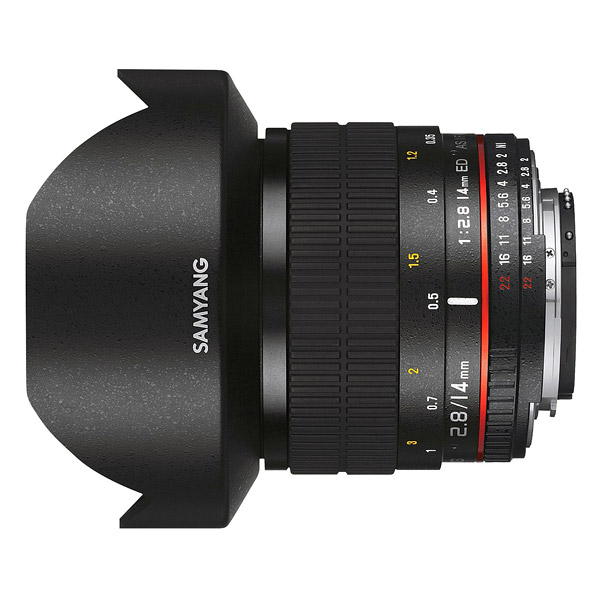 | Samyang 14mm f/2.8 IF ED UMC Aspherical Pros: Sharpness, depth of field, "three-dimensional" image, construction, economical, bright Cons: Light distortion on APS-C Sony 1.5X crop-factor Opinion: I bought this used lens in perfect condition at a very attractive price. Initially I was concerned that it was completely manual and that the model for Sony A did not have any electrical contacts to communicate with the camera (so no F-stop reading). Actually, once you understand the behavior, it has proven to be easy to use and to have properly displayed images I must generally consider overexposing +1 EV. Given the type of lens, for the time being mainly in hyperfocal, so focusing is not a problem, though it has also tried to use it creatively by being able to focus on a subject with less than 1m diaphragm about F4 or 5. Very good, vivid and full colors, some photos I just took recently made me really happy in this regard. I also find that the sharpness is really great. is a bright and well-balanced contrast lens, I did not need to change photos I recently taken, just a few light adjustments to fit thempersonal tastes. I noticed a slight image distortion, inevitable on this type of lens, but for now I have not seen chromatic aberrations. My opinion is that it is a good lens sold at a (full) price advantageous and appetizing, if you are lucky enough to find it used it is a great deal. sent on November 29, 2017 |
 | Minolta AF 24mm f/2.8 Pros: Light and compact, good construction, colors, versatile with APS-C (crop factor 1.5x) Cons: Some chromatic aberration and distortion on the sides, soft TA. Opinion: This is the first fixed lens I purchased. I found it used at a low price and the purchase was motivated by wanting to try a fixed lens that had an angle as close as possible to a 35mm on Sony APS-C (crop factor 1.5x) .rnThe lens is compact, read and fun to use. Constructively, it looks quite solid with a shiny black plastic barrel with a rubber insert to facilitate grip, while the focus ring, lens profile and graft guide are made of metal. The upper part has a window where you can read the focusing distance, there are notches for the depth of field. The lens allows automatic focusing using the SLR engine. The hood is made of petals and plastic. The lens moves inside the barrel during focusing, so there is no variation in lens length. On Sony APS-C (crop factor 1.5x) is quite versatile, the angle of field is equal to that ofa 36mm and allows you to easily take landscapes, street photos and even good close-ups. According to my personal opinion, one of the best aspects of this lens are the colors, which are very vivid. The bokeh tends to be a bit "hard" on the sides of the blur, this is especially noticeable with the lights. This does not mean that some bokeh does not appear soft or can not be used creatively. In general the focus is accurate, on my camera (an obsolete Sony A100) has some problems with subjects with low contrast or too dark. With aperture open at F2.8 manual focusing is difficult due to the reduced depth of field and can be used predominantly on very close or infinity subjects. Given the type of lens, there is a certain distortion on the sides of the image and some chromatic aberration. In general, the image shows a good definition. AF / 2 becomes soft.rnIf you are a beginner like me, you use APS-C, always like me, and you can nota fixed lens, this could become a good and fun companion. And then you can find it used at advantageous prices. sent on November 28, 2017 |
 JuzaPhoto contains affiliate links from Amazon and Ebay and JuzaPhoto earn a commission in case of purchase through affiliate links.
JuzaPhoto contains affiliate links from Amazon and Ebay and JuzaPhoto earn a commission in case of purchase through affiliate links.May Beauty Be Everywhere Around Me